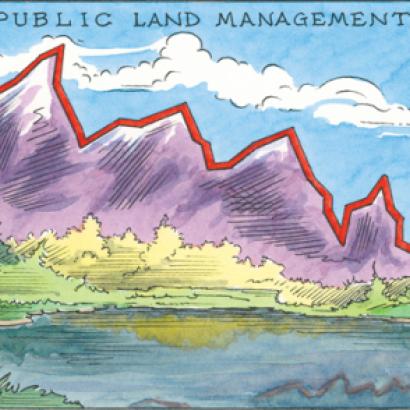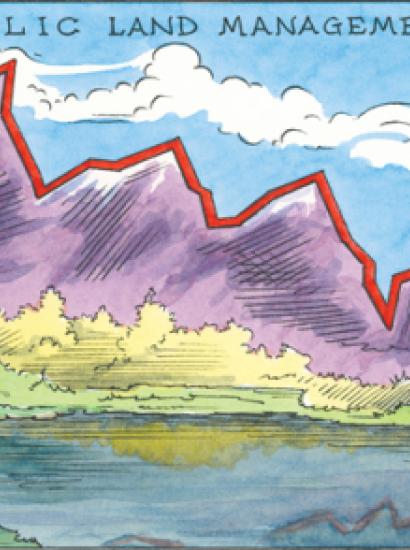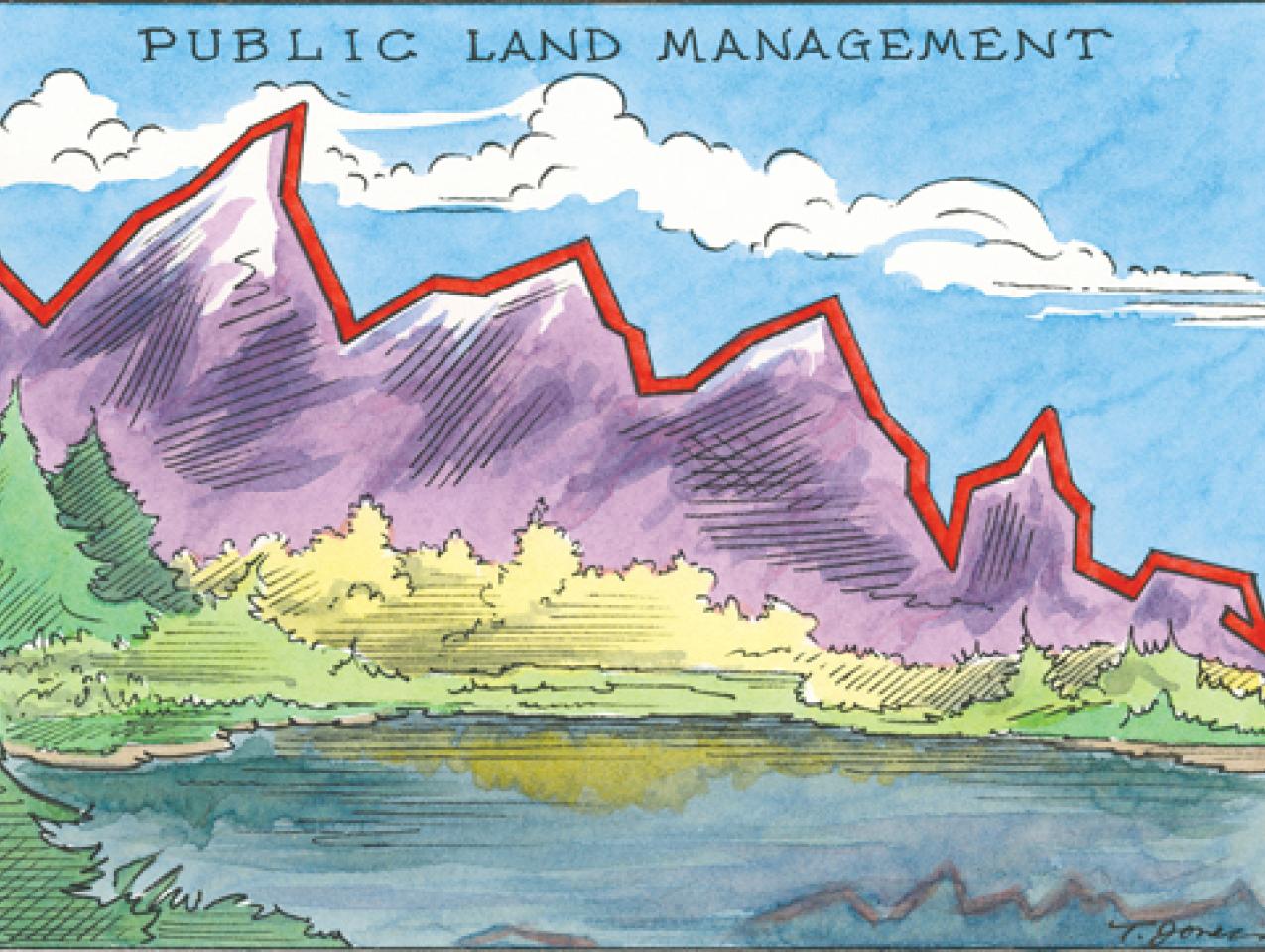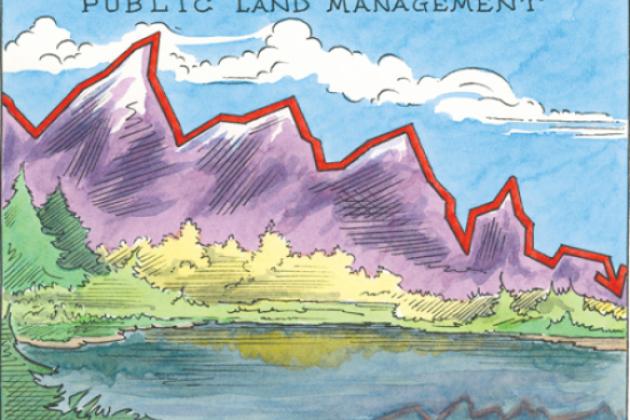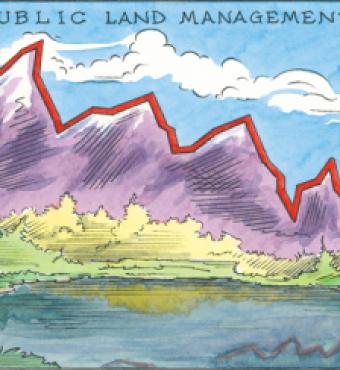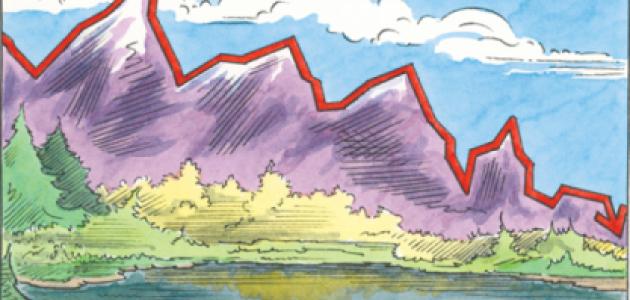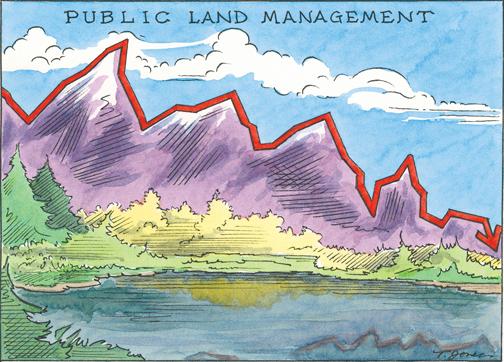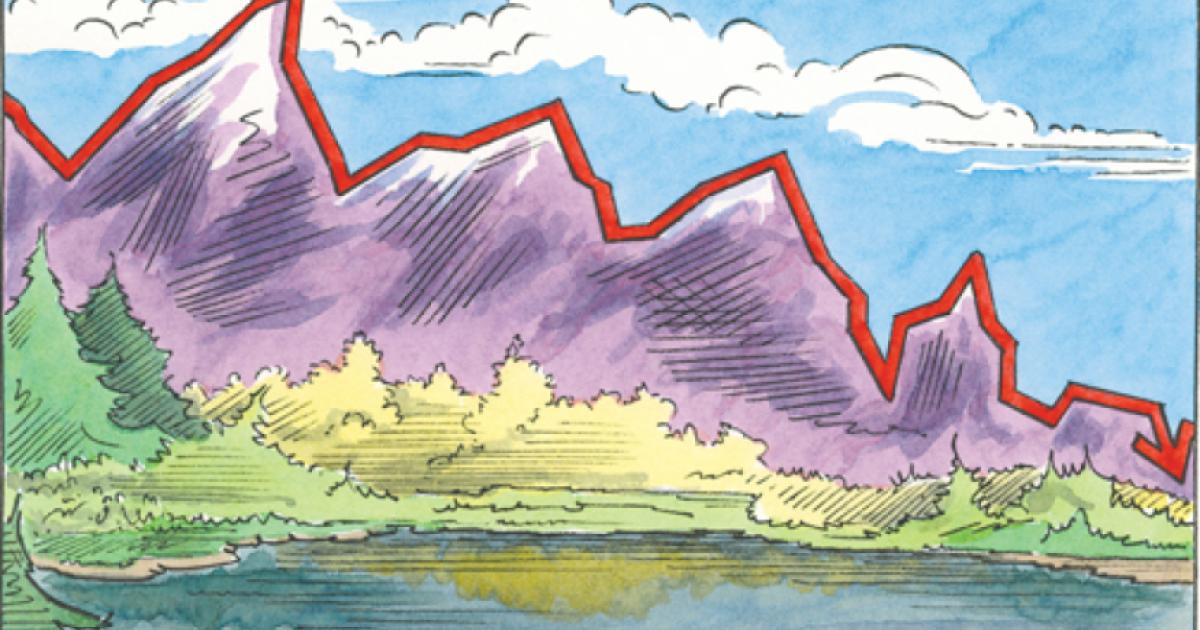- Law & Policy
- Regulation & Property Rights
- Energy & Environment
- Politics, Institutions, and Public Opinion
- The Presidency
- Congress
- Economics
“This legislation guarantees that we will not take our forests, rivers, oceans, national parks, monuments, and wilderness areas for granted, but rather we will set them aside and guard their sanctity for everyone to share. That’s something all Americans can support.” So spoke President Barack Obama last spring when he signed the Omnibus Public Lands Management Act, which placed an additional 2 million acres of public land under the federal government’s most stringent use restrictions. To anyone who knows the record of public land management, however, these words of preservation and unanimous support rang hollow.
Consider these three measures of public land stewardship:
- Environmental irresponsibility. Decades of fire suppression by the Forest Service have disrupted natural fire cycles and turned many Western forests into tinderboxes waiting to burn. Dense stands of spindly deadfall and underbrush now occupy land once characterized by open savannahs and large, widely spaced trees. One result is larger, more intense fires that burn the publicly owned forests to the ground. Indeed, by the Forest Service’s own estimates, 90 million to 200 million acres of federal forests are at high risk of burning in catastrophic fires. Bans on thinning and salvage harvesting have not only exacerbated the fire danger in public forests but also left them more susceptible to disease, insects, and high winds. Not only do the fires put enormous amounts of carbon into the atmosphere, but because the forests are dead or dying, they do not sequester carbon in the same way as healthy ones do.
- Fiscal irresponsibility. What makes the ecological mismanagement of federal lands even more difficult to swallow is its price tag. Every year, U.S. taxpayers spend billions of dollars on public land management, but the way these funds are allocated—through the congressional budgeting process—guarantees that the Forest Service, the Bureau of Land Management (BLM), and the National Park Service respond to the will of politicians. The result has been dubbed “park barrel politics.”
The National Park Service maintains an estimated $9 billion backlog in construction and maintenance projects, despite the taxpayer largesse, but lest you think it has a monopoly on financial mismanagement, consider that between 2006 and 2008 the Forest Service lost an average of $3.58 billion each year. Similarly, the Government Accountability Office testified in Congress that in 2004 the BLM earned about $12 million in grazing revenues but spent $58 million implementing its grazing program. - Economic irresponsibility. Environmental and fiscal mismanagement of federal lands may be obvious, but the economic effects of federal land mismanagement are more subtle. Consider the debate over drilling in Alaska’s Arctic National Wildlife Refuge (ANWR). Economist Matthew Kotchen of the University of California, Santa Barbara, offers an interesting thought experiment: What if environmentalists owned the oil in ANWR? Kotchen theorized that the environmentalists could use the estimated $1.08 trillion in revenues ($921 billion after subtracting the estimated costs of finding, developing, producing, and transporting the oil) to address climate change. But because environmentalists do not own the oil under ANWR, the asset will probably remain underground.
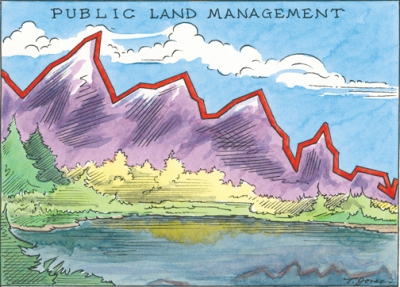
In her new book, Who Is Minding the Federal Estate? Holly Fretwell describes additional economic consequences of shifting from active to passive public lands management: “Local communities suffer from lost jobs and business activity as sawmills close down,” and “the nation’s taxpayers lose revenues from their natural assets.”
Is the new Omnibus Public Lands Management Act likely to affect the environmental, fiscal, or economic performance of federal land managers? No, because the law does not change the underlying structure of federal land management or the incentives land managers face. Putting an additional 2 million acres into wilderness, the strictest nonuse designation, only adds those to the more than 100 million wilderness acres in the “unmanaged” category and turns a potential asset into a liability.
Obama’s move to permanently establish the 26-million-acre National Landscape Conservation System will only add more red ink to the hemorrhaging budget of the Bureau of Land Management, which holds jurisdiction over it. Fretwell notes that less money is available to maintain federal lands as the percentage of wilderness land increases. This is partly because a wilderness designation results in more litigation than productivity. For example, as wilderness and endangered-species issues forced the Forest Service to reduce timber harvests in Washington and Oregon from more than 6 billion board feet in the late 1980s to one-tenth that amount in 2006, its cost of offering 1,000 board feet of lumber for sale increased to $182 from $53. Jack Ward Thomas, former president Bill Clinton’s chief of the Forest Service, says litigation has tied land management agencies in a giant Gordian knot, one that the legislation signed last spring by Obama is likely to pull tighter.
If Obama wants to craft land use policy that “all Americans can support” and afford, he should make land and water management subject less to politics and more to economics. Given that the federal estate is worth trillions of dollars, Obama should make land management agencies turn a profit. States do this with their school trust lands, earning $5.62 for every dollar spent, compared with an average of 76 cents for every dollar spent on national forests. Similarly, a forthcoming study from the Property and Environment Research Center shows that forest management on the Flathead Indian Reservation in Montana earns $2.04 for every dollar spent, compared with $1.11 earned in the Lolo National Forest, one of the few profitable ones. Americans should be better stewards of their land and water, and they can do so without adding to a burgeoning federal debt.








